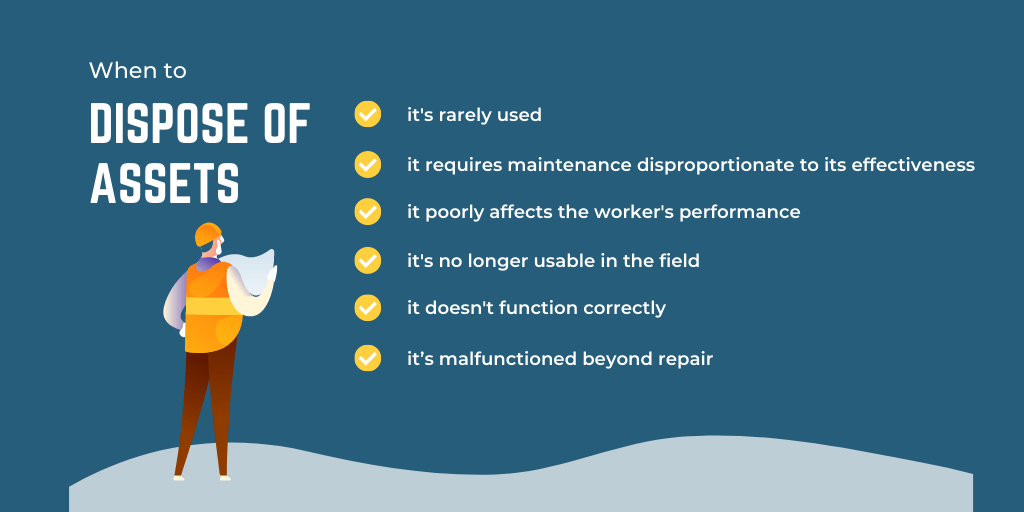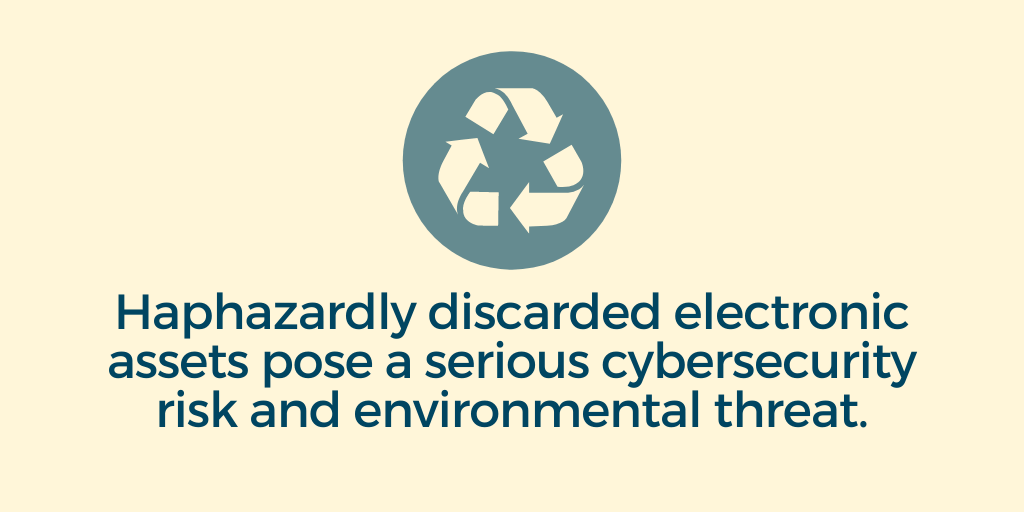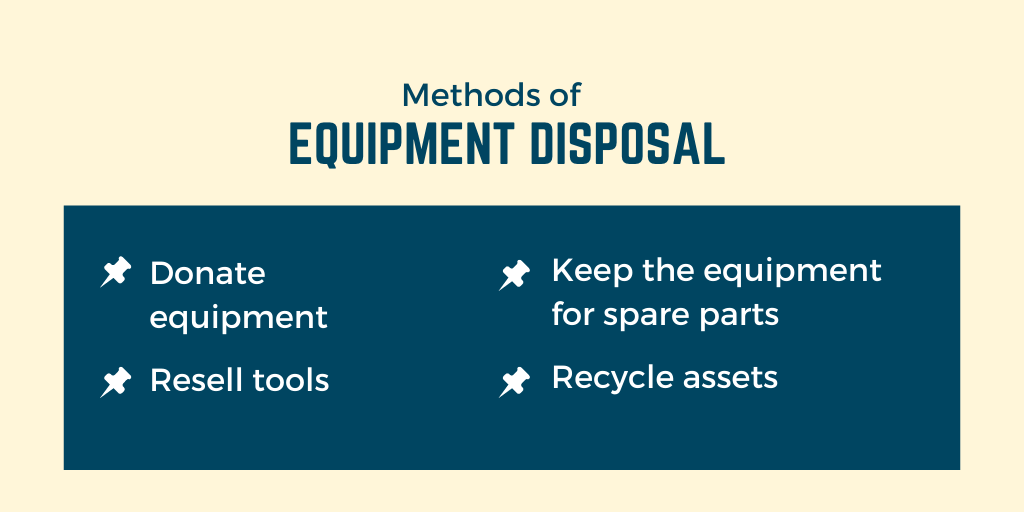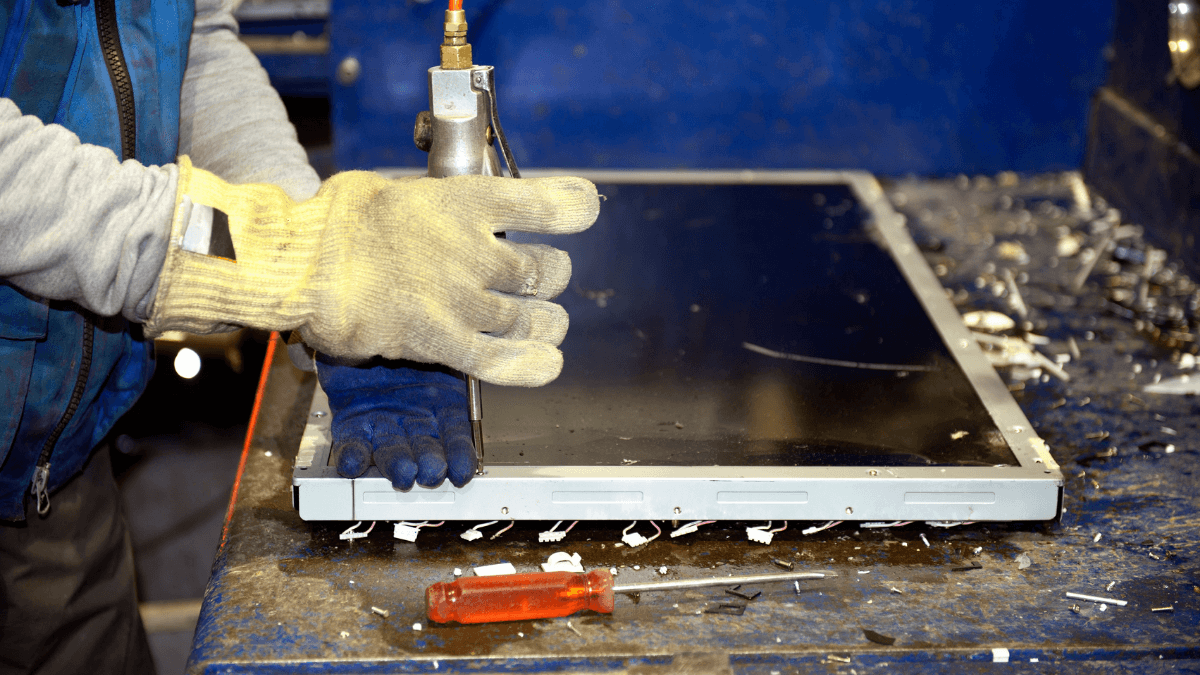Every asset eventually reaches the end of its life cycle.
Once the asset no longer serves its intended purpose, slows down significantly, or costs you more than it is worth, it is time to replace it.
This article is for any company that has to dispose of equipment.
It will explain when the time is right for disposal, what to do before it, and how to get rid of assets while saving money and staying environmentally friendly.
If that’s relevant to your interests, keep reading!
In this article...
When Do You Need to Dispose of Your Assets
A crucial part of equipment disposal is knowing when to do it.
You dispose of assets when they stop functioning correctly, having fulfilled their purpose, or when you calculate that a replacement item pays off more than the old one.
Here, you have to consider repair and maintenance costs along with effectiveness.
Understanding when an asset becomes useless lets you get rid of it on time.
Immediate disposal becomes necessary when a total malfunction occurs, so the product no longer serves its purpose, or is unsalvageable.
In these cases, eliminating the asset is your only option, as it no longer generates value for your business.
Additionally, older assets can slow you down due to wear and tear and increasingly frequent repairs.
It’s not always that easy to spot the need for product replacement. However, if you keep tabs on all your assets, you will notice if one of them breaks down more often than the others.
It will also become obvious if a piece of equipment is slower than most, or requires expensive replacement parts.
Such tools still serve their purpose but not as quickly and efficiently as before, which means they might be setting you back.
How to Determine if It’s Time to Get Rid Of Equipment?
Check the tool’s usage data for insights about the item and its purpose—when and how frequently you use it and how often it needs maintenance and repairs.
If you notice that an item requires attention and investment disproportionate to the amount of use it gets, it might be time to replace it.
Maybe an item is used very rarely. In that case, it might be cheaper to sell it and rent an alternative when you need it, instead of letting it gather dust as it awaits future use.
People who have firsthand experience with the tool will give you more information on it, like how well or fast it performs.
Sometimes, workers get set back solely because of the tool’s age, which affects its performance.
Make sure you give your workers the best tools so they can be as effective as possible.

Also, check how much the asset has already depreciated. You may have used up the asset’s value and can no longer use it for tax benefits, but that doesn’t mean it’s no longer usable in the field.
Keep in mind that the tools put aside because you don’t use them accumulate over time, causing disorganization and ineffective equipment management.
Therefore, it’s important to eliminate the items that are no longer necessary in a timely manner.
Keep track of asset data like maintenance and condition to know when it’s a good time to opt for equipment disposal.
What to Do Before Equipment Disposal
Once you decide to get rid of an item, you have to do it the right way.
For instance, nowadays, digital equipment is the most prevalent kind of equipment in any business.
Companies use computers or laptops, if only to just book a deal or contact clients, even if their main line of work is fieldwork.
Consider the data on the devices intended for disposal—it might include client information, bank statements, employee records, and company plans.
Such information could potentially be very damaging if it fell into the wrong hands. Therefore, you should purge all that data before eliminating the asset.
Most companies take the time to delete the information on the device, but that might not be enough. Often, the hard drive needs to be wiped clean or even destroyed entirely to make sure the data isn’t retrievable.
Only after cleaning the hard drive can you be sure that your data will not end up in someone else’s possession.

Once these devices slow down with age, they contribute to the startling 50 million tonnes of electronic waste a year, which can be dangerous when incorrectly thrown away, not only for the environment but also for the previous owner.
Why is this relevant?
Your discarded equipment might lead to blackmail or company losses.
For instance, the world’s largest e-dumpsite is Agbogbloshie in Ghana, where the waste from Europe and the US gets sent as secondhand goods, sometimes without the original owners’ knowledge.
Coincidentally, Ghana has become one of the top hubs of cybercrime precisely because of easy access to around 150,000 tons of electronic waste, including valuable hard drives that can be resold, making your private details accessible to cyber-criminals worldwide.
Furthermore, some materials in such waste are biohazardous and need to be discarded according to special regulations.
Look into the components of the equipment that you no longer need and see if there are any rules that you need to follow to get rid of it.
If you don’t follow the government rules, you might get a fine for harming the environment.
To prevent your data from being resold and used against you, hire professionals who can delete or wipe your hard drive so you can safely dispose of your equipment.
Four Methods of Equipment Disposal
After making sure there is no company data left on your computer equipment, it’s time to decide how to dispose of it.
Information on whether the assets are functioning and getting their job done can help you decide what to do with them. Let’s find out how!
Donate Equipment
Donating equipment is a charitable way to dispose of equipment.
If an asset still functions properly, but you’ve decided to replace it with a newer, more efficient, or faster version, there’s no need to throw the item away.
Instead, you can opt for donating it to charities, schools, or different organizations, depending on the type of asset, as this is a more sustainable option that benefits you and others.
The good news is that most items can be donated as there is always someone who can put the asset to good use.
If charities have no use for your equipment, you can donate it to specialized schools or different NGOs, thus providing support to your community as a company.
Another benefit of donating is writing the piece off as a tax deduction, which saves you some money on top of helping you get rid of the item that no longer serves its purpose.

However, before deciding to use an organization or charity to donate, inquire about their reputation and ensure they are respectable.
Some organizations are known for reselling donated equipment, so make sure to find out as much as possible about the charity before selecting them.
A good idea would be to donate to organizations that your clients consider essential, to strengthen your relationship with them.
Do thorough research before you donate equipment to someone who can still use it.
Resell Tools
Reselling tools is a cost-effective way of getting rid of your equipment.
You may have a piece of equipment that no longer functions as well as it used to, but can still fulfill its purpose.
Of course, you may profit more from buying a faster, newer model, but that doesn’t mean you should simply throw the old one away.
If the asset is still functional, you can easily resell it to your business partners, other companies, or an online buyer.
This solution is available for equipment you no longer need, even though it functions perfectly.
Instead of holding onto it, paying for its maintenance, and managing the equipment, sell it to someone who can use it and earn back some of the money you’ve spent on it.
Costly equipment that you only need once in a while isn’t something you have to own—nowadays, you can easily rent equipment and save money while still getting the job done.
When reselling, make sure to list all the equipment data, including the purchase date, any warranties, maintenance information, and any other information that might help the buyer understand whether the asset is what they need.
To determine the price of the item, consider how much of the cost you’ve already depreciated.
The residual value should be your selling price.
If you use software or an app that helps you track the equipment and its details, this should be an easy task that won’t take a lot of time, but it will help the buyers immensely.
You won’t only get rid of the item but earn some money for a new one when you decide to resell equipment.
Keep the Equipment for Spare Parts
Keeping an asset for its spare parts can be highly beneficial in the equipment disposal process.
Maybe you have an asset that malfunctioned or slowed down significantly, meaning you can’t use it for its original purpose, or it’s too slow compared to the alternatives, but you can still salvage it for its parts.
For example, when a computer battery dies, and you decide to get a new computer instead of the battery, you can keep the old one for parts.
Keeping spare parts saves you time and money while reducing unexpected downtime if another one of your assets needs a replacement part that you do not have in stock.
However, take into account how expensive the spare parts are.
If it takes a lot of energy and effort to break the equipment down into smaller pieces, make a list of components in the system, and safely store it, maybe the better option would be to buy spare parts when you need them.
This method is feasible for assets whose spare parts are either expensive or hard to find.
Also, keep spare parts if there’s a high chance you will need them soon. Throwing something away if you’ll need it next week isn’t a wise business decision.
Equipment disposal includes keeping spare parts for future use instead of throwing them away.
Recycle Assets
When done right, recycling helps you dispose of your equipment in an efficient and environmentally friendly way.
Sadly, only 18% of durable goods get recycled, which is insignificant compared to the 65% dumped in landfills worldwide.
If your equipment is unsalvageable and you cannot resell, donate, or even use it for spare parts, the only option is to write it off.
Instead of simply throwing the asset away, which is illegal and irresponsible, look into recycling to ensure you’re not producing more waste and polluting the environment even more.
Recycling provides raw materials that can be used to create new products while decreasing the need for landfills that negatively affect the environment and the residents of the surrounding areas.
When recycling, also make sure to choose a reputable company.
Keep in mind that some companies send assets to e-waste dumpsites in third-world countries instead of recycling them as promised, which adds to toxic waste and affects human health in those countries.
As you research them, many recycling companies will also provide additional information about your responsibilities, which depend on the kind of equipment you’re looking to throw away.
In short, if you have to dispose of your item completely but care about the environment, recycling is the way to go.
How Apps Help With Equipment Disposal
Tracking an asset throughout its lifecycle comes in handy as it lets you know everything about the equipment, from its state, maintenance date to its usage.
After an asset’s useful life is over, you need to decide what to do with it.
It’s not always simple to recognize when equipment is no longer helpful, so many fail to react on time and lose funds in the process, as discussed before.
Use an app or software that lets you track the asset’s entire lifecycle if you want to understand when an asset is in the disposal phase.
Such apps let you have all the information about a specific tool in a couple of clicks—from its purchase date, to all maintenance and usage information and automatically calculated depreciation.
This data will help you effectively manage equipment—and identify the perfect time to dispose of it.

Apps will also keep track of which items you’ve eliminated, thus making equipment management a lot easier.
You can make a note of all the information and have it available in the software whenever you need it, avoiding any issues. If an employee wants to use an item you’ve disposed of, they can easily find this information in the system and locate an alternative.
The software will point out specific data to you, but you’re still the one making decisions.
Use it to understand how much you’re getting from the asset compared to the expenses you have just by owning it.
Such costs include regular maintenance and servicing, emergency repairs, time lost in case the equipment has slowed down over time, etc.
If you decide that your equipment is a drain on your resources, choose the best way to write it off.
On the whole, the disposal phase of the asset’s life cycle is easier to notice, track, and calculate when using specifically designed software such as GoCodes Asset Tracking.
Conclusion
You can decide when to dispose of equipment by going through the relevant data, such as the asset’s state, maintenance statistics, purchase date, and depreciation.
Nowadays, software and apps can help you by doing these calculations automatically, allowing you to have access to the data easily.
Once you know you have to get rid of an asset, you can determine what the best way to do so is, depending on whether the item is still functioning or not.
You can recycle, donate, resell equipment or keep it for the spare parts.
Whatever you decide, make sure it complies with the law and that it helps protect the environment!








